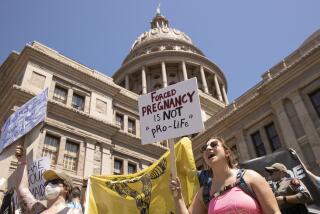Rate of repeat births among teen mothers is down, CDC reports
- Share via
Repeat births among teens have fallen, but nearly one in five children born to teen mothers already has a sibling, according to the Centers for Disease Control.
Of more than 367,000 births to mothers 15 to 19 years old in 2010, 18.3% were repeat births, a decrease of 6.2% from 2007, the CDC reported.
Large disparities among racial and ethnic groups and geographic areas remain, the centers reported. American Indian or Alaska native teens registered the highest percentages, 21.6%, followed by Hispanics, 20.9%, and non-Hispanic blacks, 20.4%. The lowest rate was among non-Hispanic whites, 14.8%.
“Teen birth rates in the United States have declined to a record low, which is good news. But rates are still far too high,” said CDC Director Tom Frieden. “Repeat births can negatively impact the mother’s education and job opportunities as well as the health of the next generation. Teens, parents, health care providers, and others need to do much more to reduce unintended pregnancies.”
Rates varied from a high of 22% in Texas to 10% in New Hampshire. California, at 17%, ranked 25th among the 50 states and the District of Columbia.
The data come amid a 41% decline in pregnancies among U.S. teens, from 1991 to 2010, according to the CDC. New data show that nearly 91% of teen mothers who were sexually active used some form of contraception in the postpartum period. But only 22% used contraceptives considered to be “most effective” -- those that result in fewer than one pregnancy among 100 users.
Globally, the World Health Organization estimates that 16 million girls aged 15 to 19, and two million girls under the age of 15, give birth every year. One in five girls has given birth by the age of 18, a figure that rises to one in three in the world’s poorest regions.
More to Read
Sign up for Essential California
The most important California stories and recommendations in your inbox every morning.
You may occasionally receive promotional content from the Los Angeles Times.














